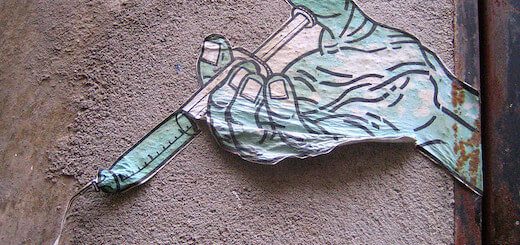Atlantic Lottery v Babstock: SCC to Rule on Waiver of Tort Class Action

The Supreme Court of Canada (“SCC”) recently heard oral arguments on the appeal between Atlantic Lottery Corporation Inc., et al. v Douglas Babstock, et al, 2018 NLCA 71. This class action provides Canada’s highest court with the opportunity to clarify whether a waiver of tort claim can constitute an independent cause of action and whether, under a tort of negligence, restitutionary remedies are available. The action comes from the Newfoundland Court of Appeal (“COA”), where the court answered these questions in the affirmative. In doing so, it recognized a cause of action where a plaintiff may “waive” the tort of negligence in favour of claiming a remedy in restitution, where the focus becomes the gains acquired by the defendant rather than harm suffered by the plaintiff.
Certification as a class action was granted to the Respondents (the “Claimants”) who, as a class, claim damages against the defendants, Atlantic Lottery Corporation et al (“Atlantic”) based on claims of breach of contract and tortious misconduct resulting in unjust enrichment. The Claimants allege in their statement of claim that video lottery terminals (the “VLTs”) operated by Atlantic are “inherently deceptive, inherently addictive and inherently dangerous where used as intended.” (Newfoundland Court of Appeal Decision [COA], 95). The Claimants provide examples of such deception including loaded dice, a deceitful “stop” button that provides no control over the outcome, and three-card monte. The Claimants allege that in operating these deceptive VLTs, Atlantic breached its duty of care towards the Claimants. The claim includes many common issues but of particular interest here is unjust enrichment gained as a result of wrongdoing. The Claimants seek restitutionary remedies such as disgorgement of profits that Atlantic acquired as a result of its own tortious wrongdoing, specifically negligence to the Claimants. This particular relief sought is grounded in waiver of tort as an independent cause of action.
The trial judge found in favour of the Claimants and allowed the case to proceed to trial on several common issues, including the waiver of tort. The majority of the COA allowed the appeal in part, but dismissed the appeal with respect to the claim based on waiver of tort and allowed the matter to proceed as a class action. Atlantic appealed to the SCC and was granted leave.
On the facts of this appeal, the SCC will not rule on whether the waiver of tort claim will succeed, but rather whether this cause of action, among other issues, may advance to trial as a common issue. In the context of a class proceeding, this means that a court is only permitted to strike claims if they are found to have no chance of succeeding (Hunt v Carey Canada Inc. [1990] 2 SCR 959).
Waiver of Tort at the Court of Appeal
The Claimants plead negligence, a breach of the duty of care owed to them by Atlantic but do not plead damages under this claim, often known as compensatory damages. Instead, they “waive” the tort of negligence, and claim “a remedy in restitution” also known as “restitutionary damages”. Restitutionary damages include disgorgement, accounting and constructive trust. The focus of these types of damages is on disgorgement of benefits acquired by Atlantic, grounded in the claim of unjust enrichment gained by the commission of Atlantic’s wrong. These remedies therefore would not be based on any loss of an individual claimant but rather the improperly acquired gains from the defendant.
The Claimants only have access to disgorgement remedies without having to show proof of loss or harm when a) the tort of negligence can be “waived” and b) if this tortious wrongdoing is permitted as an independent cause of action. In any negligence claim, a plaintiff will first have to establish that the defendant owed them a duty of care, they breached that duty and in the course of breaching such duty, they caused the plaintiff loss or harm. In a waiver of tort cause of action, the duty of care and the breach of this duty still needs to be established, but no proof need be provided of loss or harm. In its Statement of Arguments, the Claimants borrow a quote from a ONCA judgment in explaining this proposition: “waiver of tort allows a plaintiff to claims disgorgement damages based on the tortfeaser’s gain or benefit instead of compensatory damages based on the loss suffered.” (2105582 Ontario Ltd. v 375445 Ontario Ltd, 2017 ONCA 980). As the Claimants point out, the principle of waiver of tort has also been recognized by the SCC in Pro-Sys Consultants Ltd. v Microsoft Corporation, 2013 SCC 57.
On appeal, the Atlantic asserts that: “waiver of tort is not a separate cause of action and that insofar as the notion is, to use the judge’s words, derivative, there has to be a fully-proven tort of negligence, including damage, something that cannot be established given the claimants’ concessions on the pleadings and in argument.
The question of whether the claim of waiver of tort at issue on appeal should be permitted can be broken down into three issues: 1) whether there can be restitutionary damages available for tortious wrongdoing, 2) whether waiver of tort can be an independent cause of action without proving loss and 3) whether torts of negligence can be “waived”. The COA answered all of these questions in the affirmative. The latter two questions are intertwined and will be jointly discussed.
Restitution for Unjust Enrichment vs. Restitution for Wrongdoing
The COA made an important distinction between restitution for unjust enrichment and restitution for wrongdoing which clarifies the need for waiver of tort as an independent cause of action. A restitution for unjust enrichment is described as “the restitution of benefits conferred on someone who has been unjustly enriched at the claimant’s expense” even if the unjust enrichment occurred through no fault of the defendant (COA, 83). The cause of action is unjust enrichment and the remedy is restitution (COA, 85).
Restitution for wrongdoing is a remedy, “that requires the defendant to give up every enrichment received – from either the plaintiff or a third party – by virtue of having breached an obligation owed to the plaintiff.”[1] This underdeveloped principle rests on the existence of a wrong against the claimant which results in the defendant’s acquisition of a gain. Here, the focus is on stripping the defendant of this gain, rather than reconciling the plaintiff’s loss (COA, 86). The COA uses this distinction to demonstrate the need for a restitutionary remedy, rather than compensatory, in a tortious claim.
“Waiving a Tort” as an Independent Cause of Action
- Proving Loss
Atlantic argues that a restitutionary remedy based on a waiver of tort is only available when the plaintiff proves the elements of the tort, specifically the harm suffered (Factum of the Appellant (“AF”), 50). The COA disagreed, explaining that a claim based on unjust enrichment stemming from negligence, does not depend on proof of damage to the plaintiffs, as it’s sufficient to prove a breach of a duty of care (COA, 139). It can therefore be an independent cause of action and proceed without prove of injury or loss to the plaintiff.
Still, Atlantic, in its appeal to the SCC, outlines it’s concerns with providing what it calls a “gains-based remedy” to a waiver of tort. It points how the COA’s decision lies in stark contrast with other common law jurisdictions, including England, Australia, New Zealand and the United States (AF, 59). In Australia and New Zealand, for example, restitutionary damages are only available in a waiver of tort claim where all elements of the underlying tort are made out (AF, 50).
Atlantic also points to several policy considerations that weigh against a gains-based remedy for a waiver of tort, which it also presented to the COA. One issue identified but then dismissed by the majority was the possibility of a “multitudinous” plaintiffs and how the court may deal with a situation where multiple plaintiffs exist but only the first receives the windfall of the total profits and the rest are left with nothing (COA, 174). This does not concern the COA for a few reasons. First, one claimant receiving a windfall of all the profits is preferred over the defendant retaining the profits from its wrong. Second, it is similar to what already exists in the area of compensation claims – several plaintiffs may advance their claims independently, where one may get a judgement before the others even file a claim. The court also acknowledges that this type of issue may be resolved with joint case management. Third, the majority explains that the issue being resolved is not to ensure the plaintiffs are all individually compensated, rather that the defendant is not able to profit off of its own wrongs.
Ultimately, the COA found that a gains-based remedy can be available to a plaintiff who merely establishes a breach of a duty of care. It states:
“The time has come to jettison the terminology of waiver of tort and to recognize that a cause of action exists that, in principle, allows for the disgorgement of profits acquired as a result of the commission of a tortious wrong” (COA, 170).
In doing so, the COA provides remedies such as disgorgement against defendants that has acquired gains as a result of its own tortious wrongdoing, even in circumstances where there is no proof of loss to the claimant (COA, 177).
- Categories of “Waivable” Tort Cases
The COA highlights the specific categories of tort that have been historically recognized as being capable of being waived. Looking back to the 17th century, only torts involving proprietary interests and other particular “anti-enrichment” actions were able to be waived in order to receive disgorgement-type relief (COA, 160 -161). By relying heavily on academic work of John D. McCamus, the majority finds justification to expand the net on this principle. The rationale comes from the underlying principle that disgorgement remedies are meant to deter wrongful conduct to ensure profits are stripped when acquired from a wrongful act. The COA sees no reason why this rationale cannot be attributed to other tortious wrongdoing, specifically negligence. In justifying its position, the majority highlights the difference in principles and policies of disgorgement claims compared to compensatory damages, as demonstrated by McCamus, “two different remedies service different purposes or rationales and need not always be available in the same fact situations” (COA, 168).
The majority is satisfied that although historically, personal torts such as negligence were not recognized as causes of action that allowed for restitutionary remedies, specifically when loss to the claimants goes unproven, the time has come for this to change. COA reins in their decision by clarifying that the “normal remedial response” is compensatory damages and that disgorgement may be considered “exceptional” as described by the Claimants (AF, 120; Factum of the Respondent (“FR”), 31).
The majority sums up its decision the following way:
“…it is time to restate as a cause of action a principle that rationalizes the notion underlying waiver of tort leading to the restitution or disgorgement of profits acquired as a result of commission of a tortious wrong: provision of a disincentive or deterrence of wrongful conduct which leads to improper profit-making” (COA, 154).
The COA goes on to clarify that recognition of claims based on waiver of tort does not mean such a claim in the appeal would succeed. It would depend on factual considerations that inform whether or not the enrichment was unjust – a finding that occurs after certification (COA, 174).
Implications
In finding that waiver of tort can be an independent cause of action in negligence claims, thereby granting access to plaintiffs that do not prove loss as a result of a breach of duty to restitutionary remedies, the COA provides an expansion of opportunities for future class actions. Removing the onus of class action claimants to prove loss or injury in a negligence claim which would provide serious relief and make it easier (although, still not easy), to collect damages from defendants.
Will the SCC agree with the COA, or will they take the approach of G. Weber who wrote that, “Granting disgorgement without proof of loss (when it would otherwise be required) results in disgorgement arising out of legal nothingness”? Either way, the legal community, particularly those in class actions are sure to welcome additional guidance in this doctrine.
[1] M. McInnes, The Canadian Law of Unjust Enrichment and Restitution (Markham, ON; LexisNexis Canada Inc., 2014) at 9.








Join the conversation